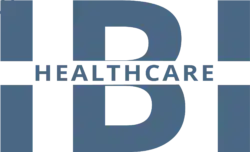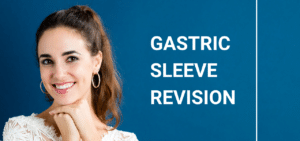Some of the most common questions we hear regarding gastric sleeve surgery are: “Will I have bad scarring after gastric sleeve surgery?” and “Will my scars after gastric sleeve surgery be permanent?”. There are no simple answers to these questions because there are many different techniques used for bariatric surgery and advancements in the field are offering less invasive options.
Also, some people are less likely to scar than others depending on their skin type, skin pigmentation, and texture. Here we will highlight the different types of gastric sleeve procedures, and potential scar placements based on incision locations, and offer suggestions to promote healing and scar minimization.
Does Gastric Sleeve Surgery Leave Scars?
Gastric sleeve surgery will likely leave some scarring. Some scarring is unavoidable because our bodies naturally repair wounds by creating scar tissue. Even if performing SILS the least invasive gastric sleeve surgery that utilizes only one incision will most likely leave a small scar. Normally, your surgeon provides information on best practices for healing incisions with the least amount of scarring.
What Causes Scar Tissue After Gastric Sleeve Surgery?
During any surgery that requires an incision, or when you are injured, your white blood cells jump into action and race over to the location of the incision or injury to start fighting infection and healing the area. The body is triggered to begin producing new collagen to help close up and fill the wound area. Normally, a scab will form over the wound to protect it while it finishes the healing job underneath. The scab will eventually fall off leaving new skin and a scar. Our bodies are pretty remarkable!
Do Scars From Gastric Sleeve Surgery Go Away?
Scars that form as a result of gastric sleeve surgery will probably not go away completely. Most scars naturally fade and reduce to a small white line over time, and some of the discolorations on your skin should become almost invisible unless you have had a large incision from open surgery.
Scarring tends to be more pronounced in patients who have higher BMIs, are older, or patients who do not let their incisions heal properly before beginning activities. Scars from gastric sleeve surgery may be more pronounced and more visible in the following instances:
- A hypertrophic scar has formed (abnormal healing has resulted in a thick raised scar).
- Wounds have reopened due to over-activity or infection.
- Sun exposure during the early stages of healing.
What Kind Of Scars Can I Expect After My Gastric Sleeve Surgery?
The type and technique of surgery, as well as the number of incisions, will determine the scars resulting from gastric sleeve surgery.
The severity of scars depends on their location and the surgical instruments used. Laparoscopic single-incision gastric sleeve, multi-port laparoscopic gastric sleeve, and open gastric sleeve surgery will leave varying degrees of scarring.

No-Scar Gastric Sleeve Surgery
Before we dive into all the different types of gastric sleeve surgery and the resulting scars, did you know there is a gastric sleeve procedure that does not leave any scars at all? Performing ESG without incisions creates no scars. Forming a small sleeve that resembles gastric sleeve surgery, ESG reduces the stomach size by 70%, using sutures. Read our recent Endoscopic Gastric Sleeve FAQs to learn more about the procedure.
Scarring From Single-Incision LGS Surgery
Using one incision, surgeons now perform single-incision gastric sleeve surgery. Consequently, this method leaves a tiny, nearly invisible scar near the belly button.
Scarring From Traditional Laparoscopic Gastric Sleeve
LGS is the most common and most performed bariatric procedure. Making small incisions around the abdomen, usually 5, the surgeon accesses the stomach through the abdominal wall. Traditionally, the incisions are in the upper abdomen, and due to their size, the scarring from the healed gastric sleeve incisions is minimized.
Scarring From Open Gastric Sleeve Surgery
Gastric sleeve surgery is very rarely done as open surgery these days. It is invasive and increases the risk of complications after surgery. In rare instances, it may be necessary such as emergency surgery. The scars that result from open gastric sleeve surgery run the length of the chest vertically from below the breastbone to the navel and are noticeable.
Timeline for Scar Healing
There are three stages in scar healing, and your scar may look different during each stage.
The Inflammatory Stage
Stage one begins immediately when the incision is made or the injury happens. This stage can last three to four days and consists of the construction of blood vessels to stop any blood loss and blood clotting capabilities begin to work. This is also when the white blood cells show up to kill bacteria and clean up the wound. During this stage, your incision will look dark red and swollen.
The Proliferative Stage
Stage two begins about day 3 working along with stage 1. Cells called fibroblasts start to produce new collagen and create new blood vessels to repair the damaged tissue. Consequently, disorganization causes collagen to lay down thick and raised, creating scars.
The Remodeling Stage
The final stage starts about 20 days post-incision and can continue for up to a year or more. During this stage, collagen continues to repair and fill in the damaged tissue areas only it does it more strategically. The collagen around the tension lines aligns and collagen fibers cross-link and lie closer together. This is what causes scars to thin out, lighten up, and become less visible.
How Can I Help Heal My Scars Faster?
By taking certain steps, we can help gastric sleeve scars heal better and make them less noticeable. Typically, it takes about two years for scars to smooth, but a few steps help the healing process.
- Keep the incision clean.
- Keep the incision dry.
- Keep the incision covered.
- Avoid smoking.
- Get enough sleep.
- Stay active.
Following the directions from your surgeon regarding your incision after-care will go a long way in helping your post-op gastric sleeve incisions heal faster. Keeping your incisions clean and covered will help deter bacteria from entering the wound and causing infections. Keeping the incision dry will help it heal faster and reduce scarring.
Nicotine hinders your skin’s healing process by reducing your white blood cell’s oxygen supply to the injured area. Plus, once you quit smoking, it takes three days for the carbon monoxide to dissipate, boosting infection risk.
Getting enough sleep and good circulation are also important to gastric sleeve incision healing. Faster healing incisions greatly reduce the risks of infection and severe scarring.
Despite inevitable scarring, following aftercare instructions, eating healthily, and getting rest can help your body repair itself. Furthermore, several cosmetic treatments can help reduce or eliminate visible scars. Treatments like microdermabrasion and microneedling, just to name a few, are very effective in reducing the appearance of scars.
Are you considering a gastric sleeve procedure but worried about incisions and scarring? Schedule an appointment to learn more about the techniques we use, including the scarless gastric sleeve.











